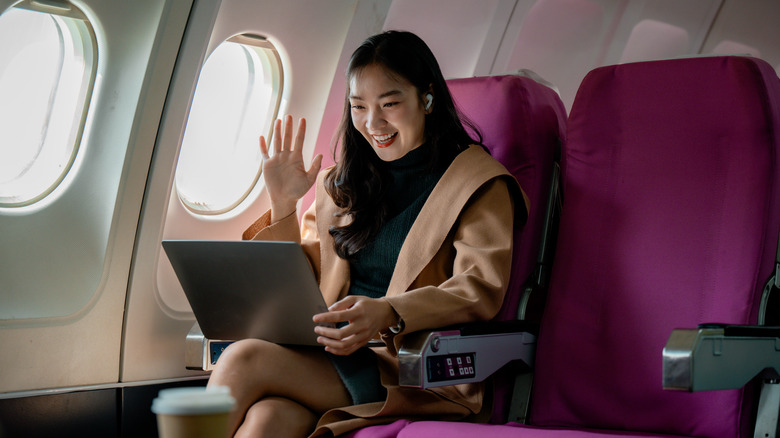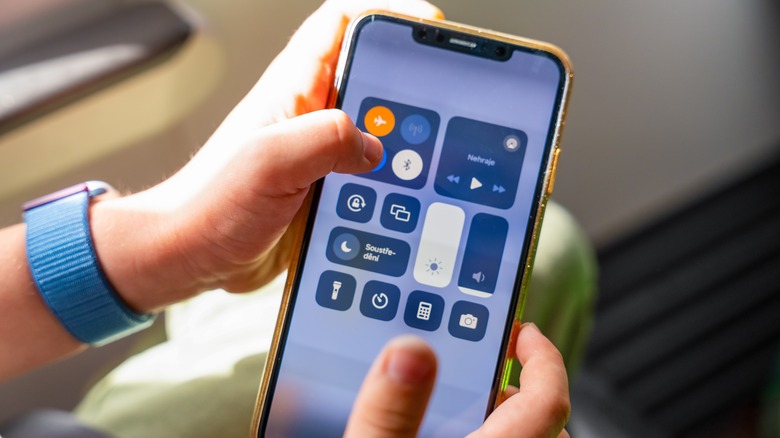Can You Use Your Mobile Hotspot On An Airplane?
When we're on the road (and we mean, literally on the road, and not in the air), many of us use our phones as mobile hotspots to connect our other devices to the internet. The hotspot connects to the cellular network and then converts that connection to a Wi-Fi signal. You can then connect your laptop, tablet, or other internet-enabled device to your phone just like you'd connect those devices to any other Wi-Fi signal. It's a great trick to keep your kids entertained on long drives or to connect with your colleagues when you're away from the desk. But does it work in the air?
Unfortunately, the answer is no. You can't connect to a mobile hot spot at 30,000 feet, and the reason why is pretty simple. Mobile hot spots require cellular data to create a connection between your phone and another device. That connection is impossible once you're in the air because your phone won't be able to connect to cell towers on the ground. It's likely that you'll also be required to put your phone into airplane mode, which disables both cellular and Wi-Fi connections. So if we can't use a hot spot in the air, what do we do? Luckily, travelers have other options.
Other solutions for frequent fliers
Almost all airlines offer Wi-Fi connections, but be prepared to pay for the service on many carriers. Sometimes the cost will depend on your cell carrier. If you have a T-Mobile Experience Plan, you'll have access to free Wi-Fi on flights with American Airlines, Delta, United Airlines, and Alaska Airlines. JetBlue offers Wi-Fi to all passengers for free, but most other domestic carriers charge for the service. The fees range from $6 to $10 or more, with Alaska Airlines charging up to $25 on some flights. However, because the Wi-Fi originates from a satellite connection, it can be slow.
If you're an Android user, you may be able to connect your phone to the plane's Wi-Fi and then connect your other devices using only one connection. But if you want to avoid the fees and still enjoy movies and music during your flight, be sure to download your content on all devices ahead of time. You'll also want to remember that public Wi-Fi is not secure, so don't engage in any activity that could expose your passwords, banking information, and other private data. You can use a VPN on a plane, but keep an eye on it — the Wi-Fi can be spotty and it may drop out without you noticing.

